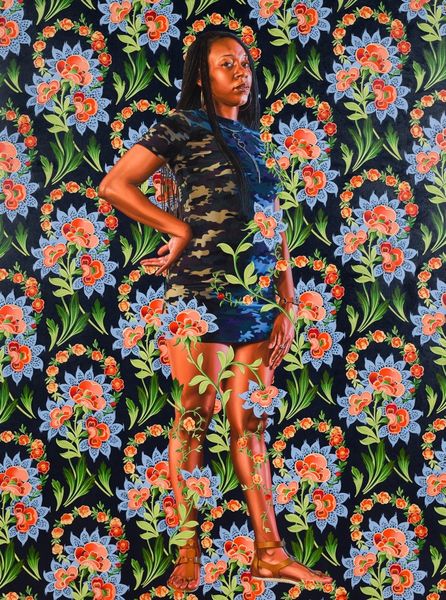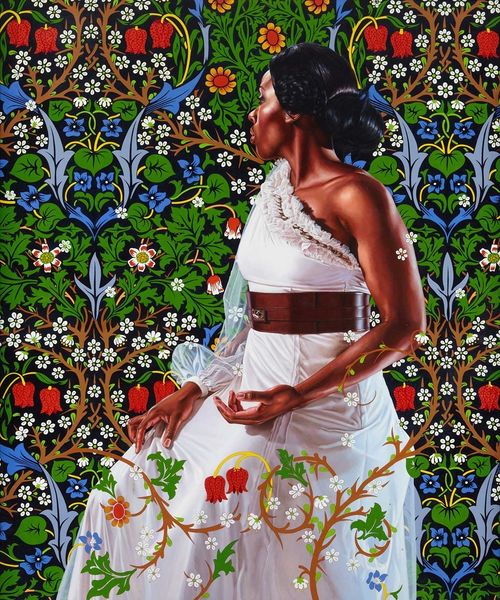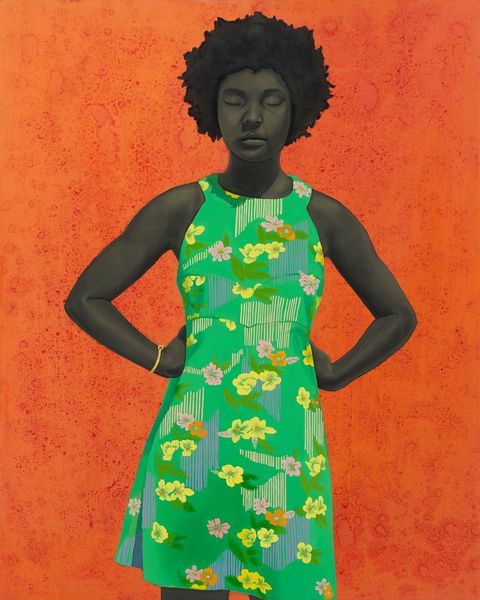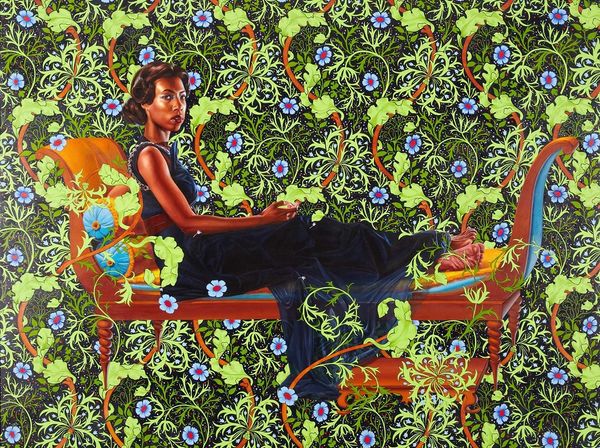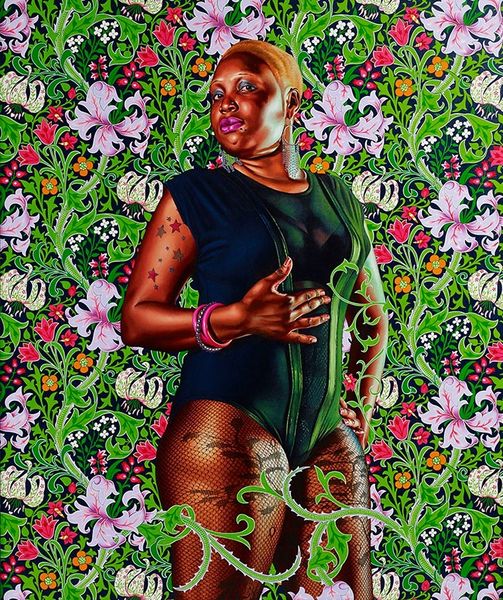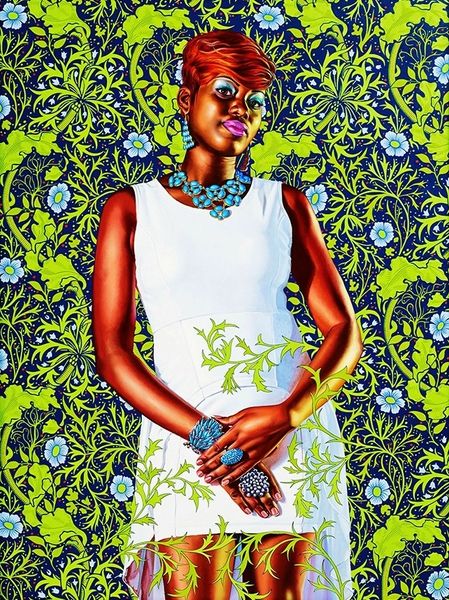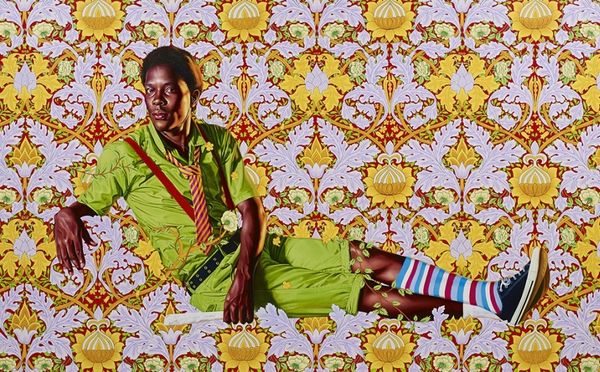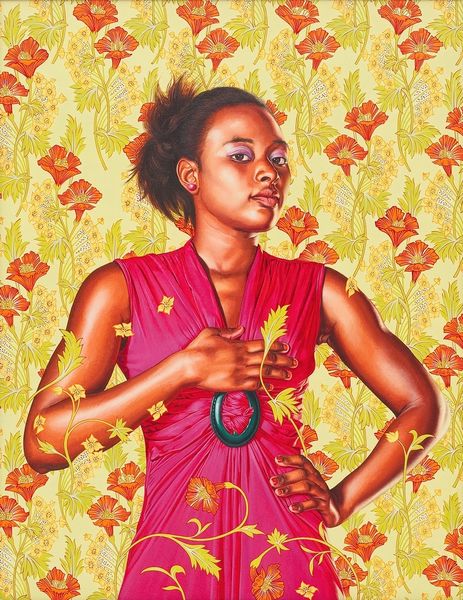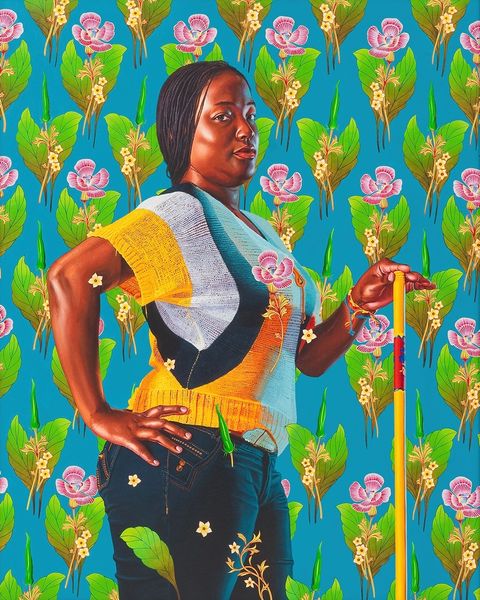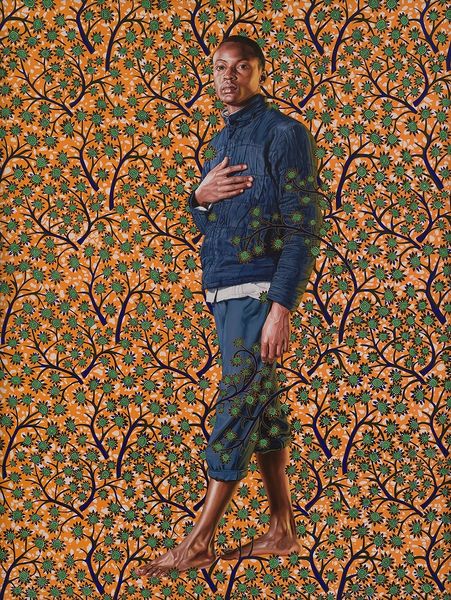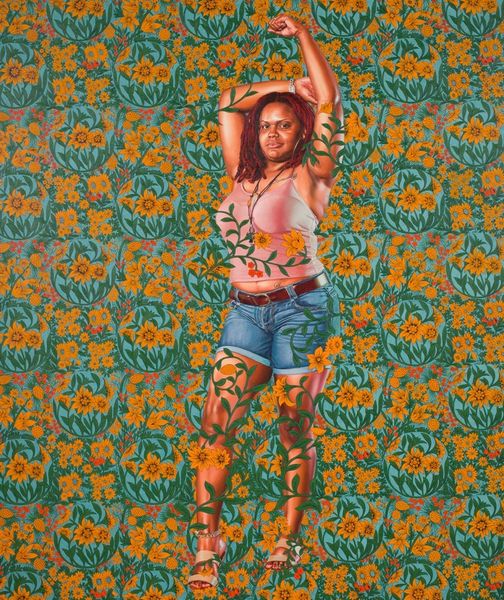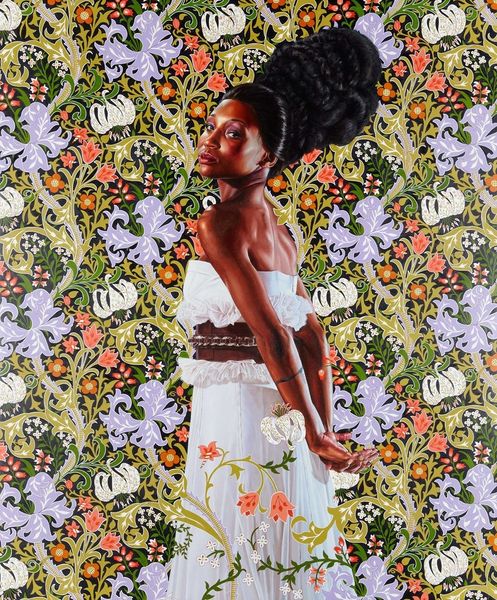
painting, acrylic-paint
#
portrait
#
pattern-and-decoration
#
figurative
#
contemporary
#
painting
#
appropriation
#
acrylic-paint
#
figuration
#
flower pattern
Copyright: Modern Artists: Artvee
Editor: We're looking at Kehinde Wiley's "Portrait of a Florentine Nobleman," created in 2018 using acrylic paint. I'm immediately struck by the vibrant tension between the figure and the decorative floral background. What catches your eye as you examine its formal qualities? Curator: The interplay between flatness and depth is key. Wiley utilizes a complex pattern which, while visually arresting, risks overwhelming the figure. Consider how the figure’s striped garment both clashes and harmonizes with this ornate backdrop. Editor: It's almost camouflage, isn't it? How does the contrast affect our reading of the subject? Curator: Precisely. Note also how the figure's skin is rendered: the subtle shifts in tone. Then compare this approach with the even, almost mechanical repetition of elements within the background. This difference, what does it suggest to you regarding Wiley's formal strategies here? Editor: I guess it emphasizes the individual, while almost satirizing the idea of inherited status. Curator: An astute observation. Focus, now, on the composition as a whole: Wiley’s utilization of pictorial space. Do you perceive any areas where the formal structure appears deliberately strained, perhaps even destabilized? Editor: Now that you mention it, the vine motif that seems to wind around the figure almost feels like it's trying to contain or restrain her within the picture plane. Curator: An intriguing point. Such visual dynamics provoke us to question assumptions of power and representation within the language of portraiture itself. Editor: So it's less about who is portrayed, and more about how. Curator: Indeed. The how *is* the who, in a sense. By emphasizing the artifice, Wiley compels a reevaluation, moving beyond superficial representation toward something far more structurally engaged. I learned to perceive it less like a portrait and more like a critical commentary through contrasting styles.
Comments
No comments
Be the first to comment and join the conversation on the ultimate creative platform.
